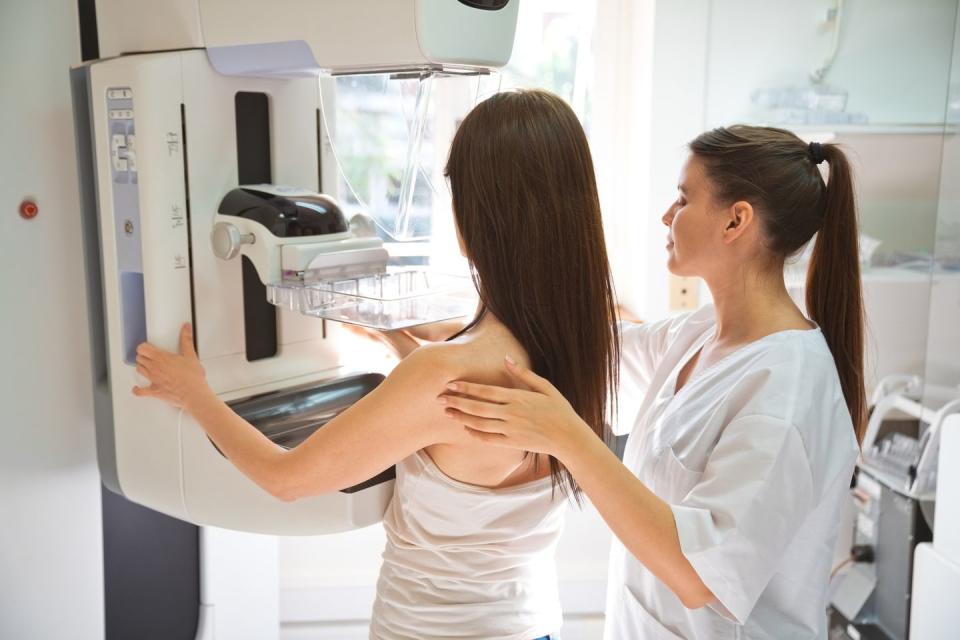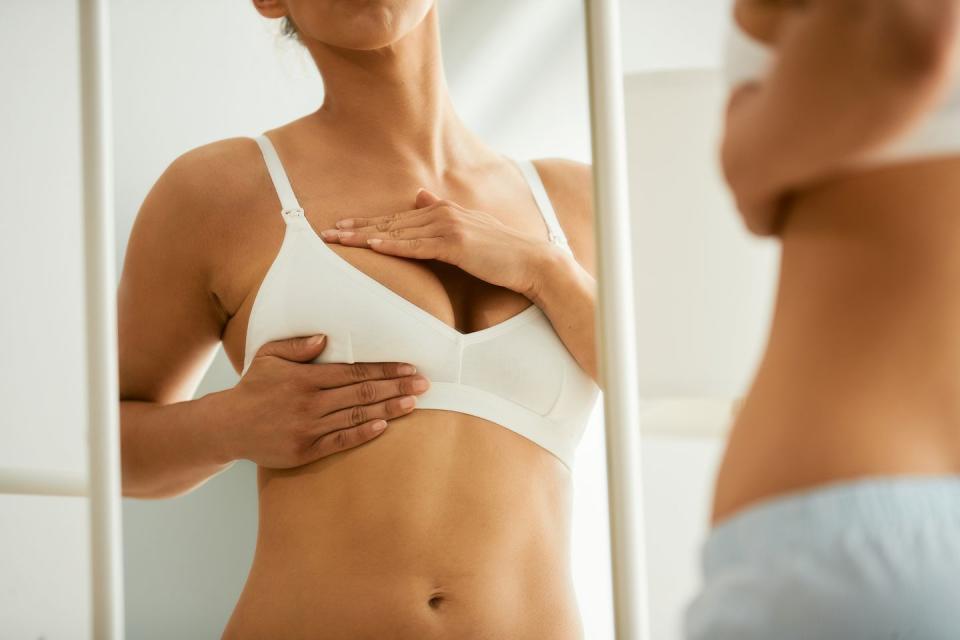What are mammograms? EYNTK about breast screening

You'll no doubt have heard the term mammogram thrown about in conversation at least one point in your life. Whether your mum received a letter to make an appointment when you were younger, your gran has been invited for one, your aunty just had hers or your older sister is preparing for her first, straight off the bat, let me say that the routine breast screening is *nothing* to worry about.
In fact, according to Lester Barr, a consultant breast surgeon and founder of the charity Prevent Breast Cancer, always attending your mammogram appointments "might just save your life."
Why, you ask? Well, we've quizzed three medical experts to give you the best answers possible, from what actually are they? to how can they help? So, without further ado, here's the 411 on all things mammograms so that you can be clued up for the future...
What is a mammogram?
"A mammogram is a diagnostic test used to look for any problems within the breast and surrounding tissues," explains Dr Unnati Desai, Medical Director and Women's Health Specialist at Skinfluencer London.
The breast screening "helps us find cancers when they're too small to see or feel, and before there are any signs or symptoms," adds Mr Barr.
"This is important because early detection usually means less aggressive treatment and a higher chance of going back to a completely normal life with a normal life expectancy."
Mr Barr also states that finding cancers early makes a huge difference to how easy they are to treat.

What is the process of a mammogram?
Mr Barr explains that during a mammogram "a total of four X-ray images are taken - two of each breast." He notes that each breast will be screened within the mammogram machine with an image taken from above, and one from the side.
Dr. Hana Patel, an NHS GP, adds that some patients may find the screening uncomfortable, as your breast is slightly compressed in order to take a clear image – but it won't be painful.
"Your breast will be placed firmly onto an X-ray machine and squeezed between two pieces of plastic to keep it still while the X-rays are taken," she shares.
While Dr Patel notes that while this usually takes a few seconds - for which you'll need to stay still throughout the process - a mammogram can also take up to 30 minutes to carry out.
Who does a mammogram affect?
"Breast screening is suitable for women over 40 years of age who have no breast symptoms and who have not had a mammogram within the last 12 months," Dr Desai states.
Mr Barr reveals that around two million women a year attend mammogram appointments, with women up to the age of 70 being eligible.
Every woman between these ages and who is "registered with a GP practice will receive a routine invite for a mammogram every three years," he adds.
How do mammograms help?
As previously mentioned, mammograms detect lumps well before they can be felt or otherwise noticed, therefore preventing or detecting cancers early so there's a higher chance of recovery.
"If no signs of cancer are found, then the breast screening result letter will relay this," says Dr Patel, who adds, like Mr Barr, that you won't need any further tests until your next mammogram invitation three years later.

Do mammograms carry any risks?
According to a 2022 study in the National Library of Medicine, the most commonly cited risks associated with mammograms include overdiagnosis, anxiety, false positives and radiation injury.
However, Dr Desai expresses that the radiation risk is nothing to worry about. "While it's true that radiation is used in mammography the amount is so small that any associated risks are tiny when compared to the huge preventive benefits gained from the test."
So there's no excuse to miss your breast screening appointment!
Why are younger women not eligible for mammograms?
You may be wondering, 'why are people below 40 not invited for mammogram appointments?' despite breast health and regular boob checking in young women being a huge conversation right now.
Well, taken from Dr Desai's knowledge and experience, mammograms are not actually recommended in younger women as they generally have denser breast tissue which makes it difficult to detect abnormalities.
"In this instance, the dose of radiation from a mammogram cannot be justified to warrant the use of mammograms for routine screening," she explains.

How can I check my boobs?
Even though us 'youngsters' won't receive our NHS breast screening invitation in the post for at least another 10 years, if not more, it doesn't mean that you should neglect your boobs til then! Quite the opposite, in fact - you should really be getting to know them.
Dr Patel has kindly dropped a brief boob-checking 101 guide for us, showing us how we can check our breasts for any abnormalities. (You can also check out our in-depth version here.)
Firstly, she notes that you should be aware of what is normal for you, as we all have different shaped boobs. Plus, we may also have one breast that is different in shape and feel from another, and this can be normal for us, too. So, let's get checking...
Know what your boobs normally feel like for you.
Look at and feel your breasts: They may be more tender nearer or during your period, and change consistency. Some people may find that their breasts become 'lumpier' nearer their period and in their armpit. Again, this can be normal for you.
Know what changes to look for: Generally, this means any change of size, look or feel of your breast and skin on your breast. Also, new lumps to the breast, any new rashes or changes to your nipple, or if one breast feels different to the other, such as pain or discomfort. These are all reasons to see your GP for an examination and consultation.
When checking: Look at your breasts and feel each breast and armpit up to your collarbone on both the left and the right side. You might want to look in front of the mirror, or in the shower or bath. Often, people book in with their GP for a second opinion after their partner picks up changes in their breasts or finds a new lump.
There are other changes to look out for: For further information, check out the NHS breast aware page.
So, if there's one thing you do tonight, make sure it's getting up close and personal with your boobs – and should you notice anything out of the ordinary: firstly, don't panic and secondly, book an appointment with your GP who'll be able to give you all the info you need about what to do next.
This article is not intended to be a substitute for professional medical advice or diagnosis. Always seek the advice of your physician or other qualified health provider with any questions you may have regarding a medical condition.
You Might Also Like


